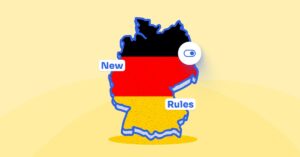Introduction
The introduction of the General Data Protection Regulation (GDPR) in May 2018 has significantly impacted how websites handle user data. One area that has come under scrutiny is the use of cookie walls, which are pop-ups that restrict access to a website’s content until the user accepts the use of cookies. To analyze the GDPR compliance of cookie walls, businesses must understand the nuances of data protection laws, the role of consent, and the implications for user privacy.
Under GDPR, obtaining user consent is a critical aspect of data protection. Consent must be freely given, specific, informed, and unambiguous. Using cookie walls to obtain consent has raised concerns that users may not freely consent, which could violate GDPR. Additionally, using cookie walls has implications for user privacy, as cookies can be used to track a user’s online behavior. To ensure GDPR compliance, businesses must obtain freely given, specific, informed, and unambiguous user consent when using cookie walls to obtain consent for using cookies. They must also ensure that users know the risks associated with using cookies and the implications for their privacy.
Request consent
GDPR mandates that user consent is a crucial principle that businesses must abide by. Cookie walls are a mechanism that requires users to provide their consent to access a website explicitly. However, assessing whether this specific consent form aligns with the GDPR requirements is essential. The European Data Protection Board (EDPB) has further emphasized that obtaining valid consent should involve a clear and unambiguous indication of the user’s wishes. This means that users should be fully informed of the implications of their decision and be able to give their consent freely.
In this context, a cookie consent banner is critical in obtaining consent. Cookie consent banners serve as the interface through which users can provide or refuse their consent. It is, therefore, important to ensure that cookie consent banners are designed to be user-friendly and transparent, providing clear information about cookies and their purposes. This can help users make informed decisions about their consent, ensuring businesses comply with GDPR requirements.
Cookie consent banners and GDPR
Cookie consent banners are crucial in informing users about a website’s data collection practices. They serve as the first point of contact between users and the website’s privacy policy. GDPR mandates that user consent must be explicit, meaning users should agree before data processing occurs. It’s, therefore, important to pay close attention to how a cookie banner informs users about the types of cookies and tracking devices used by websites.
In particular, pre-ticked boxes that imply automatic acceptance may not comply with the GDPR’s requirement for a genuine choice. The GDPR requires that users be able to give or withhold consent freely without being subjected to any negative consequences. Therefore, websites must provide users with clear and comprehensive information about cookies and tracking devices and obtain explicit consent before using them.
To ensure compliance with GDPR, the Italian Data Protection Authority, and other EU data protection authorities have provided specific criteria for assessing the legality of cookie consent banners on a case-by-case basis. The criteria include the clarity and transparency of the information provided to users, the ease of withdrawing consent, and the ability to control personal data.
European Data Protection Board (EDPB) guidelines
The European Data Protection Board (EDPB) holds a significant position in interpreting and ensuring compliance with the GDPR. The EDPB guidelines highlight the importance of user consent being freely given, specific, informed, and unambiguous. This means users should have an equitable alternative to accessing a website without agreeing to non-essential cookies.
To analyze cookie walls in the context of EDPB guidelines, it is necessary to conduct a comprehensive examination of the mechanisms that inform users and provide a genuine choice. This involves taking a closer look at how users are informed about cookies and how they can manage their preferences. Ultimately, the goal is to ensure that users are fully aware of their rights and can exercise them transparently and fairly.

French Data Protection Authority’s perspective
The CNIL, the French Data Protection Authority, has laid out certain criteria that can be used to evaluate the legality of cookie walls. These criteria include assessing whether users are being offered a fair alternative to gain access to the website in case they refuse cookies. It is important to note that the CNIL’s guidance emphasizes the significance of providing users with a genuine choice, in line with the GDPR’s principles of user-centric consent.
Therefore, website owners must ensure that their users are presented with a clear and transparent choice regarding the use of cookies and that users are not forced to accept cookies if they wish to gain access to the website’s content.
Fair alternatives and genuine choice
It is crucial to analyze whether websites that use cookie walls are GDPR-compliant. To assess their compliance, it is necessary to evaluate whether they provide fair alternatives to users who choose not to accept non-essential cookies. The GDPR significantly emphasizes users having a genuine choice when accepting cookies.
This means websites should not force users to accept tracking cookies without providing reasonable alternatives. One such alternative is the concept of a fair alternative, which ensures that users can access a website’s essential features without compromising their privacy. This approach ensures that users have complete control over their data and can make informed choices about how their information is used.
Data collection and processing of personal data
Websites use cookie walls to collect and process personal data. Websites must comply with the GDPR by being transparent about the types of data they collect, the processing purpose, and the data retention duration. The GDPR requires that users be adequately informed through cookie banners about how their data will be used, ensuring transparency and aligning with the GDPR’s principles of fair and lawful processing.
Cookie walls are essential for websites to obtain user consent for collecting and processing personal data. It is essential to note that the GDPR emphasizes the importance of user consent, and cookie walls should not be used to force users into providing their data. Websites that use cookie walls must ensure users can decline or accept cookies. Additionally, websites must allow users to withdraw their consent at any time.
Blanket ban vs. case-by-case basis
When assessing GDPR compliance concerning cookie walls, it is important to consider whether websites implement a blanket ban on access for users who refuse cookies or if they adopt a case-by-case basis. The GDPR emphasizes that each user’s consent should be individually assessed, and a blanket ban may not align with the principles of fair and transparent data processing. Therefore, websites must follow a case-by-case approach to ensure users’ consent is respected and their privacy is protected.
By analyzing the approach taken by websites towards cookie walls, one can gain valuable insights into their level of commitment to GDPR compliance. This, in turn, can help users make informed decisions about which websites they choose to interact with and how they choose to share their data. By prioritizing fair and transparent data processing practices, websites can build trust with their users and ensure that they operate under the GDPR principles.
Cookie paywalls and subscription fees
It is not uncommon for some websites to implement cookie paywalls to limit access to certain content unless users agree to accept cookies. However, the GDPR compliance of such practices needs to be carefully examined. Websites must ensure that their use of cookie paywalls does not infringe upon users’ fundamental right to access information freely.
Additionally, if websites introduce subscription fees as an alternative to accepting cookies, they must ensure that their practices are fair and comply with the GDPR’s principles. This involves providing transparency and clear information about using cookies and subscription fees and obtaining valid consent from users where necessary. Overall, websites must prioritize protecting user privacy and rights when implementing cookie paywalls or other similar measures.

Dark patterns and unethical practices
To ensure GDPR compliance of cookie walls, conducting a thorough analysis of websites and their practices is essential. This involves scrutinizing whether websites indulge in dark patterns or use unethical techniques to coerce users into accepting cookies. The GDPR strongly emphasizes fair, transparent, and ethical data processing practices.
However, websites’ misleading design elements or deceptive language can subvert the genuine choice that GDPR mandates, undermining compliance and eroding user trust. Identifying such practices and taking corrective measures is crucial to ensure user privacy and trust.
EU Privacy Law and ePrivacy Directive
Websites need to comply with various legal frameworks when implementing cookie walls. Apart from the GDPR, the EU Privacy Law and the ePrivacy Directive are also significant. These legal frameworks complement the GDPR by providing additional guidelines for using cookies and tracking technologies.
Therefore, websites need to analyze the alignment of cookie walls with both the GDPR and the ePrivacy Directive to ensure comprehensive compliance with EU privacy laws. This approach ensures that websites are transparent about using cookies and tracking technologies and that users are informed about the data they collect from them. By adhering to these legal frameworks, websites can protect users’ privacy rights and build trust with their audience.
Pop-ups and user experience
To comply with GDPR, websites must inform users about their data collection practices. One commonly used method is through cookie walls, which often appear as pop-ups. However, these pop-ups can negatively impact the user experience and may even employ dark patterns against GDPR guidelines.
To ensure compliance with the GDPR’s transparency and user empowerment principles, websites must balance providing the necessary information and maintaining user-friendly design. By doing so, they can effectively present cookie information to users without compromising their experience on the website.
GDPR-compliant alternatives
To ensure compliance with GDPR, it is important to carefully analyze the use of cookie walls on websites. Instead of relying on cookie walls, exploring alternative methods that align with GDPR guidelines is recommended. These GDPR-compliant alternatives may include dynamic cookie banners that provide clear information about the use of cookies and enable easy withdrawal of consent. Additionally, such banners should offer fair alternatives for users who do not accept non-essential cookies.
It is crucial for website owners and administrators to continuously assess and implement such alternatives to stay in line with evolving data protection standards. Failure to do so may result in legal repercussions and damage to the website’s reputation. By prioritizing user privacy and implementing GDPR-compliant alternatives, website owners can build trust with their users and demonstrate their commitment to protecting personal data.
Tracking cookies and data protection
GDPR brings to light specific concerns regarding the use of tracking cookies. Websites that use such cookies must comply with GDPR by transparently communicating the purposes of tracking cookies and obtaining explicit user consent. This involves assessing whether websites inform users about the data collected, the entities involved in data processing, and the tracking duration.
The GDPR’s emphasis on protecting personal data requires a meticulous examination of how websites handle tracking technologies, including the types of data collected, how it is processed, and how long it is stored. Websites must also provide clear opt-out mechanisms for users who do not wish to have their personal data relating to them collected. Failure to comply with GDPR could result in significant financial penalties and reputational damage. Therefore, websites need to prioritize GDPR compliance when using tracking technologies.

Refusing cookies and user rights
GDPR has introduced several rights for users to protect their data. One of these rights is the right to refuse cookies without being subjected to discriminatory consequences. This means that websites must provide users with the option to accept or reject cookies, and they should not limit access to essential features if users refuse to accept cookies.
To evaluate whether websites adhere to this requirement, it is necessary to analyze the compliance of cookie walls. A cookie wall is a practice where websites restrict access to their content until users accept their cookie policy. Such a practice violates the GDPR since it forces users to consent to data processing to access essential features. Therefore, evaluating the compliance of cookie walls involves assessing whether websites respect users’ right to refuse cookies.
Moreover, websites must ensure that refusing cookies does not restrict access to essential features. This means that users should be free to exercise their rights under the GDPR without facing any consequences. Websites must balance their data collection needs and users’ rights to ensure comprehensive compliance with the GDPR. This balance requires websites to provide clear and concise information about their cookie policy and to obtain users’ consent through affirmative action.
Withdraw consent and user rights
It’s crucial to understand that GDPR compliance is a non-negotiable requirement for websites prioritizing user privacy. Obtaining ongoing user consent that can be reversed without negative consequences is paramount. Cookie walls must be designed to make it easy for users to reject and revoke consent. Users must have the right to refuse cookies and opt-out without penalty or restrictions.
Websites must prioritize user consent and privacy rights by implementing user-friendly cookie policies, providing clear data usage and protection information, and making it easy for users to manage their consent preferences. It’s, therefore, essential to understand the importance of GDPR compliance and take the necessary steps to protect users’ privacy and trust.
Conclusion
Several critical steps must be taken when it comes to ensuring compliance with GDPR and using cookie walls. However, it is essential to understand that achieving GDPR compliance is not simply ticking boxes or going through the motions. It requires a proactive and user-centric approach that prioritizes privacy and data protection above all else. This means staying on top of changing regulations, adapting to new challenges, and taking a no-nonsense approach to enforcing compliance.
Ultimately, achieving GDPR compliance with cookie walls requires a firm commitment to protecting user privacy and data security. By taking a proactive and assertive approach to compliance, you can help instill confidence and trust in your users, which is essential for building long-term relationships and ensuring the continued success of your business.




